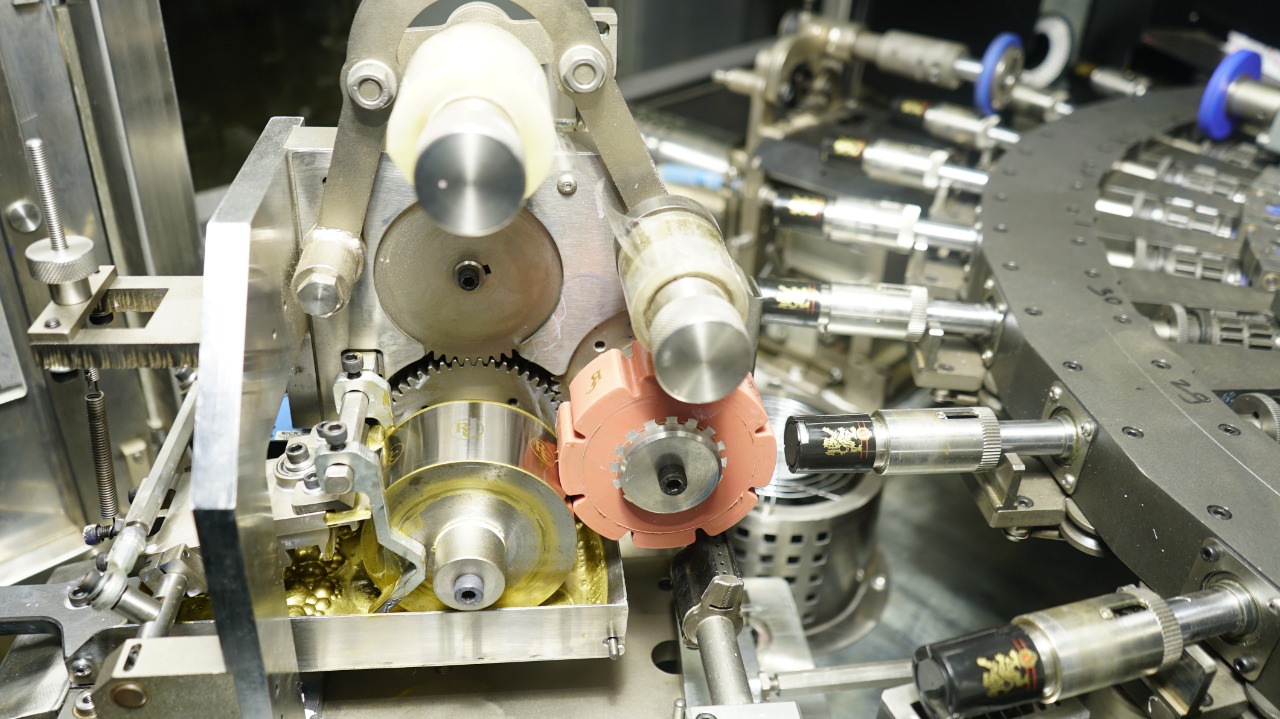We manufacture equipment for direct printing using Screen Printing, Pad Printing and Dry Offset printing technologies. We also manufacture equipment for coating articles with for example a base coat or a lacquer coat.

Advantages of the direct printing technologies in which we have expertise are given below;
Direct Printing:
- Is a method in which ink is transferred directly onto an article (substrate) to be decorated,
- Differs from in-direct decoration methods such as labelling (in-mould, decals), heat transfer or shrink sleeves in that it does not require extraneous material such as carrier film, silicon paper, adhesive etc.,
- Is cost effective for high production rates simply because there is no cost of such extraneous materials
Direct printing covers only the regions of the artwork on the substrate. This allows the material of the substrate surrounding the artwork to be seen and felt.
As article decoration techniques have evolved, today direct printing finds suitability in fewer applications. However, in these limited applications direct printing is preferred over other decoration processes for very good reasons.
Each direct printing method has its unique advantages. Let us explore these.
Screen Printing:

Screen printing can be made suitable to print on articles as small as writing instruments and as large as 10,000 ltr water tanks. Numerous visual effects can be achieved for a variety of articles at high production speeds using screen printing.
Quantity of ink deposited (ink lay down) on the substrate by screen printing is greater than any other direct printing process. Importantly, ink deposition by screen printing can be controlled by varying parameters such as mesh count, squeeze edge, stencil thickness, etc. Thickness of ink deposition can be controlled to range from 20 microns to 500 microns. Such controlled ink deposition can provide:
- Rich look: Texture of the ink, such as matt or glossy, can be brought to life. For example, a glossy ink screen printed on a matt substrate will result in shining only the printed area.
- Printing opacity: This quality is particularly useful where light colored ink is to be printed on dark colored substrate. Greater ink deposition can be useful in hiding the dark colored substrate.
- Raised effect: Screen printed artwork can have a thickness which can be appreciated by touch. Interestingly, this raised effect can be different to the look of the artwork. For example, initially a raised texture is printed on a substrate, subsequently a patch is printed over the raised texture, then the patch is seen but the texture (hidden behind the patch) is felt by touch.
Pad Printing:

Pad printing or Tampon printing is suitable to print on various surface profiles including flat, round, concave, convex as well as irregular shapes.
Importantly, of all direct printing technologies, the ink lay down (ink deposition) using pad printing is second only to that of screen printing. Therefore, greater printing opacity can be achieved easily using pad printing.
There are two main types of pad printing systems: conventional vertical stroke pad printing and rotary pad printing. The applications of the two systems vary. Conventional vertical stroke pad printing is useful for printing on larger or more complex substrates. On the other hand, rotary pad printing is suitable for printing flat substrates at high speeds or all around cylindrical objects.
The unique feature of pad printing is that it allows wet-on-wet printing. In multi-colour pad printing, the first colour ink does not need to be cured fully before second colour ink can be printed. Advantages of wet-on-wet printing include :
- Lower cost: As curing equipment between printing two colours is not required, cost of capital investment as well as machine running costs are reduced.
- Smaller footprint: The overall size of equipment for printing multiple colours is smaller than by a process requiring intermediate drying. Note: Partial curing between two colours may be required for very high speeds.
Dry Offset Printing:

Dry offset printing is suitable for printing on articles which can be held rigidly, e.g. on a mandrel, such that the article does not buckle under pressure from the printing blanket. Its typical applications include injection moulded cups, pails and bottle closures.
Only the highest quality inputs including rubber rollers are provided with our Dry offset machines as this printing quality in Dry offset printing is depending on the radial runout of one printing roller to the next. Also minor adjustments are provided to ensure printing setting is easy and less time consuming.
In Dry offset printing, multiple colours can be printed in a single pass with registration (precise location of one colour in relation to other colours). This presents the following advantages:
- Very high speeds: Printing on periphery (side wall) of conical or cylindrical substrates does not require re-orientation of the substrate for printing registration. This saves process time and increases speed of production.
- Lower cost: Dry offset is the most economical of all direct printing processes because ink deposition is very low. Therefore, the cost of ink is conserved. These savings can be significant in high volume production. Moreover, as intermediate curing is not required, equipment capital cost and running costs are reduced.
- Smaller footprint: The size of equipment for printing multiple colors is smaller as curing is required only after printing all colors.
